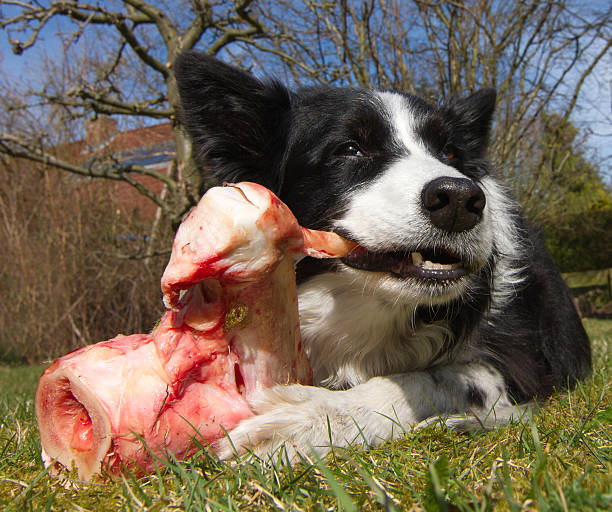Transform Your Dog’s Health: The Ultimate Guide to Raw Dog Food

Introduction
If you’ve been looking for ways to enhance your furry friend’s health and vitality, you might have stumbled upon the concept of raw dog food. But what exactly is it, and why should you consider making the switch? In this ultimate guide, we’ll delve into everything you need to know about raw dog food, from its benefits to practical tips for transitioning your dog.

Understanding Raw Dog Food
The Basics of Raw Dog Food
Raw dog food, often referred to as a “raw food diet” or “BARF” (Biologically Appropriate Raw Food), is a diet that mimics what dogs might have eaten in the wild.This diet comprises uncooked meat, bones, fruits, and vegetables.
The Prey Model is another approach, focusing on whole prey animals or their parts, like feathers or organs.
Common ingredients in raw dog food include beef, chicken, fish, and a variety of vegetables. These components are chosen to provide a balanced diet that reflects what dogs’ ancestors might have consumed.
Nutritional Benefits
One of the primary benefits of raw dog food is its high protein content. Dogs are naturally carnivorous, and a diet rich in quality protein can lead to better muscle development and overall health. Essential fatty acids found in raw food also contribute to a shiny coat and healthy skin.
Vitamins and minerals are crucial too. Unlike highly processed kibble, raw diets often retain more of these nutrients, which can be beneficial for your dog’s immune system and overall well-being.
Transitioning to Raw Dog Food
How to Start
Introducing your dog to a raw food diet should be a gradual process.
Start by mixing a small amount of raw food with your dog’s current kibble, and slowly increase the proportion of raw food over a few weeks. This gradual change helps your dog’s digestive system adjust to the new diet.
Monitor your dog’s health during this transition. Look for signs of digestive upset like diarrhea or vomiting, and consult with your vet if needed.
Common Challenges
Digestive upset is a common challenge when switching to raw food. It’s important to ensure the diet is well-balanced and to introduce new foods slowly. Finding the right balance of nutrients can be tricky, so keep an eye on your dog’s condition and consult with a vet if you notice any issues.
Choosing the Right Raw Dog Food
Commercial vs. Homemade
When it comes to raw dog food, you have two main options: commercial products or homemade meals. Commercial raw dog foods are convenient and often nutritionally balanced, but they can be expensive. Homemade raw food gives you control over ingredients and cost, but it requires careful planning to ensure all nutritional needs are met.
What to Look for in Commercial Products
If you opt for commercial raw dog food, look for high-quality ingredients and reputable brands. Check the ingredient list to ensure it includes a variety of meats and vegetables, and avoid products with fillers or artificial additives.
DIY Raw Dog Food Recipes
For those interested in homemade options, there are plenty of simple recipes available. A basic recipe might include ground beef, chicken liver, carrots, and spinach. Ensure you include bone meal or a calcium supplement to balance the diet. Always research and follow guidelines to prevent nutritional deficiencies.
Ensuring a Balanced Diet
Nutritional Requirements
A balanced raw dog food diet should include appropriate amounts of protein, fat, and carbohydrates. Essential nutrients like vitamins and minerals must be present in the right proportions to support overall health.
Consulting with a Veterinarian
Consulting with a veterinarian is crucial when transitioning to a raw diet. A vet can provide guidance on balancing the diet and monitor your dog’s health throughout the process.

Safety Considerations
Handling and Storage
Raw dog food requires careful handling and storage to prevent contamination. Always store raw food in the refrigerator or freezer and thaw it safely. Wash your hands, utensils, and surfaces thoroughly after handling raw food.
Hygiene and Health
Maintaining good hygiene practices is essential. Regular health check-ups will help ensure your dog remains healthy on a raw diet and allow for early detection of any issues.
Cost Considerations
Budgeting for Raw Food
Raw dog food can be more expensive than kibble, but the cost varies depending on the source. Buying in bulk and preparing homemade meals can help reduce expenses. Consider the overall health benefits when evaluating the cost.
Success Stories and Testimonials
Many dog owners report positive changes after switching to raw dog food, including improved coat condition, higher energy levels, and better digestion. Real-life success stories can be motivating and informative for those considering the switch.
Conclusion
Switching to raw dog food can be a game-changer for your pet’s health. By understanding the basics, choosing high-quality ingredients, and transitioning gradually, you can help your dog thrive on a raw diet. Always consult with your vet to ensure a balanced and safe diet for your furry friend.
FAQs
What potential hazards come with feeding your dog a raw food diet?
Raw dog food can pose risks if not handled properly, including bacterial contamination and nutritional imbalances. It’s crucial to follow safety guidelines and consult with a vet.
How can I make sure my dog is getting a balanced diet?
Ensure the diet includes a variety of proteins, vegetables, and supplements as needed. Regular vet check-ups can help monitor your dog’s nutritional intake.
Can puppies eat raw dog food?
Puppies can eat raw food, but their nutritional needs are different from adult dogs. Consult with your vet to tailor the diet to support healthy growth and development.
How long does it take for dogs to adjust to a raw diet?
Adjustment time varies, but many dogs adapt within a few weeks. A gradual transition can help minimize digestive issues.
What should I do if my dog refuses to eat raw food?
If your dog refuses raw food, try different proteins or mixing it with their favorite treats. Consult with your vet for additional advice if the issue persists.


